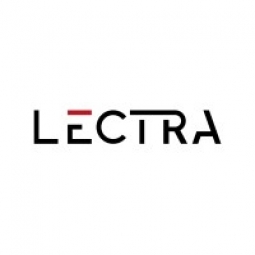下载PDF
Conic French Riviera Brand Enhances Tradition with Lectra Technology
技术
- 功能应用 - 产品生命周期管理系统 (PLM)
- 功能应用 - 产品数据管理系统
适用行业
- 服装
- 消费品
适用功能
- 产品研发
- 质量保证
- 商业运营
服务
- 系统集成
- 培训
挑战
Façonnable was exploring ways to check and track major events in the product lifecycle to enhance collection development. Structuring information presented to supply partners and allowing information to be easily archived and analyzed to support development and brand evolution were top priorities. Product quality, on-time deliveries, and business growth were key goals when researching ways to control the development process and harmonize communication from design to the final product.
关于客户
Façonnable is a high-end French fashion brand known for its classic French refinement and impeccable craftsmanship. Based in Nice, France, the company has a rich history of over 60 years and specializes in menswear and womenswear. Façonnable is committed to maintaining its high-end positioning worldwide and is focused on enhancing its collection development process. The company aims to control fit costs for an international consumer base, improve quality, and stabilize its operations. With a strong emphasis on tradition and innovation, Façonnable is dedicated to delivering high-quality products that reflect its brand values.
解决方案
To maintain their high-end positioning worldwide, Façonnable implemented Lectra Fashion PLM throughout product development, from line planning to production. This solution provided a common thread running through the company, allowing for more professional and precise operations. The implementation of Lectra Fashion PLM brought order and clarity to the collection process, enabling Façonnable to reclaim its Côte d’Azur roots and strengthen its brand image. The solution required users to provide a minimum amount of information for products to advance through defined development stages, ensuring a controlled workflow. This visibility allowed Merchandising to evaluate past sales and budget for the next season, while also preventing unpleasant surprises late in the process. Additionally, Lectra’s pattern making technology helped development teams work together efficiently, saving time and reducing the risk of errors.
运营影响
数量效益
相关案例.

Case Study
Fire Alarm System and Remote Monitoring Sytem
Fire alarm systems are essential in providing an early warning in the event of fire. They help to save lives and protect property whilst also fulfilling the needs of insurance companies and government departments.Fire alarm systems typically consist of several inter-linked components, such as smoke detectors, heat detector, carbon monoxide, manual call points, sounders, alarm and buzzer. The fire alarm system should give immediate information in order to prevent the fire spread and protect live and property.To get maximum protection a shoe manufacturer in Indonesia opted for a new fire alarm system to monitor 13 production sites spread over 160 hectars. Although the company had an existing fire alarm system, it could not be monitored remotely.It was essential that the new system would be able to be monitored from a central control room. It needed to be able to connect to the existing smoke detector and manual call point. Information should be easily collected and passed on to the Supervisory Control and Data Acquisition (SCADA) system. Furthermore, the system should have several features such as alarm management, auto reporting, being connected to many client computers without additional cost, and run 24/7 without fails. The company also needed a system which could be implemented without changing the architecture of the existing fire alarm system.

Case Study
IoT Applications and Upgrades in Textile Plant
At any given time, the textile company’s manufacturing facility has up to 2,000 textile carts in use. These carts are pushed from room to room, carrying materials or semi-finished products. Previously, a paper with a hand-written description was attached to each cart. This traditional method of processing made product tracking extremely difficult. Additionally, making sure that every cart of materials or semi-finished products went to its correct processing work station was also a problem. Therefore, the company desired an intelligent solution for tracking assets at their factories. They also wanted a solution that would help them collect process data so they could improve their manufacturing efficiency.
.png)
Case Study
Improving Vending Machine Profitability with the Internet of Things (IoT)
The vending industry is undergoing a sea change, taking advantage of new technologies to go beyond just delivering snacks to creating a new retail location. Intelligent vending machines can be found in many public locations as well as company facilities, selling different types of goods and services, including even computer accessories, gold bars, tickets, and office supplies. With increasing sophistication, they may also provide time- and location-based data pertaining to sales, inventory, and customer preferences. But at the end of the day, vending machine operators know greater profitability is driven by higher sales and lower operating costs.

Case Study
Series Production with Lot-size-1 Flexibility
Nobilia manufactures customized fitted kitchens with a lot size of 1. They require maximum transparency of tracking design data and individual processing steps so that they can locate a particular piece of kitchen furniture in the sequence of processes.

Case Study
Retailer Uses RFID Scanner to Improve Efficiency
Patrizia Pepe wished to improve the logistics of their warehouse: accepting incoming goods from their production sites, movement of items throughout
the warehouse, and packaging of goods for distribution to the retail locations. They initially tried to use barcodes for this function. Because barcodes must be individually scanned within a line-of-sight, the acceptance of goods coming into the warehouse was too time consuming. Working with the University of Florence, Patrizia Pepe instituted a five-month pilot project beginning in August of 2009 to test the validity of an RFID solution. The pilot involved tagging of about 60,000 items for the second seasonal collection, and convinced the company to move forward with tagging all items.






